In this MiniTool article, we will demonstrate how to solve Windows Task Manager not responding. Solutions include PC restart, Windows updates check, system restore, malware scanning, system files repair, and more advanced ones.
Potential Causes for Task Manager Not Opening
Technically, Task Manager is a component of the OS (operating system) that helps administrators & users monitor, manage, and troubleshoot tasks. It provides information about apps & processes performance and hardware resource usage (e.g., CPU, memory, disk, network).
In this case, you can tell that the Task Manager tool is quite important. However, many users always ask how to solve Task Manager not responding,seeking help on Forums or support.
In fact, this issue could stem from:
- Malware Infections
- System File Corruption
- Software Conflicts
- Registry Errors
- Group Policy Restrictions
- More…
If you’re in the same boat, fret not, this post can help you troubleshoot the problem with the following fixes. Try them one by one until you find the one that works for you.
Solution 1: Enable Task Manager in a Different Way
There are many ways to bring up Task Manager. Before trying more complex methods, you should try them all to see if Task Manager can be opened.
- Press Ctrl + Shift + Esc to run Task Manager directly.
- Right-click on the taskbar > select Task Manager.
- Press Ctrl + Alt + Del > choose Task Manager.
- Press Win + R to evoke the Run window > type taskmgr > hit Enter.
If your Task Manager still doesn’t respond, then you can try the solutions below.
Solution 2: Restart Your PC
A restart is required as it often refreshes the system and improves performance by closing all running programs, clearing the PC’s memory, and rebooting the OS.
During the restart, it can address some minor issues with background processes and the system that might be causing Windows 10 Task Manager to not open.
To do that:
Step 1. Open Start > select the Power icon > click on Restart.
Step 2. After your PC reboots, you can try running Task Manager again.
If this method doesn’t work, then let’s try the next one.
Solution 3: Update Windows
Windows updates always provide security patches, bug fixes, performance enhancements, and sometimes new features. So, when failing to start your Task Manager, it’s necessary to check if there are any available updates.
Follow the steps:
Step 1. In Windows Search, type update and choose Check for updates.
Step 2. In Settings, hit Check for updates under Windows Update.
Step 3. If it says Updates available, then save your work, download, and restart your PC to install it.
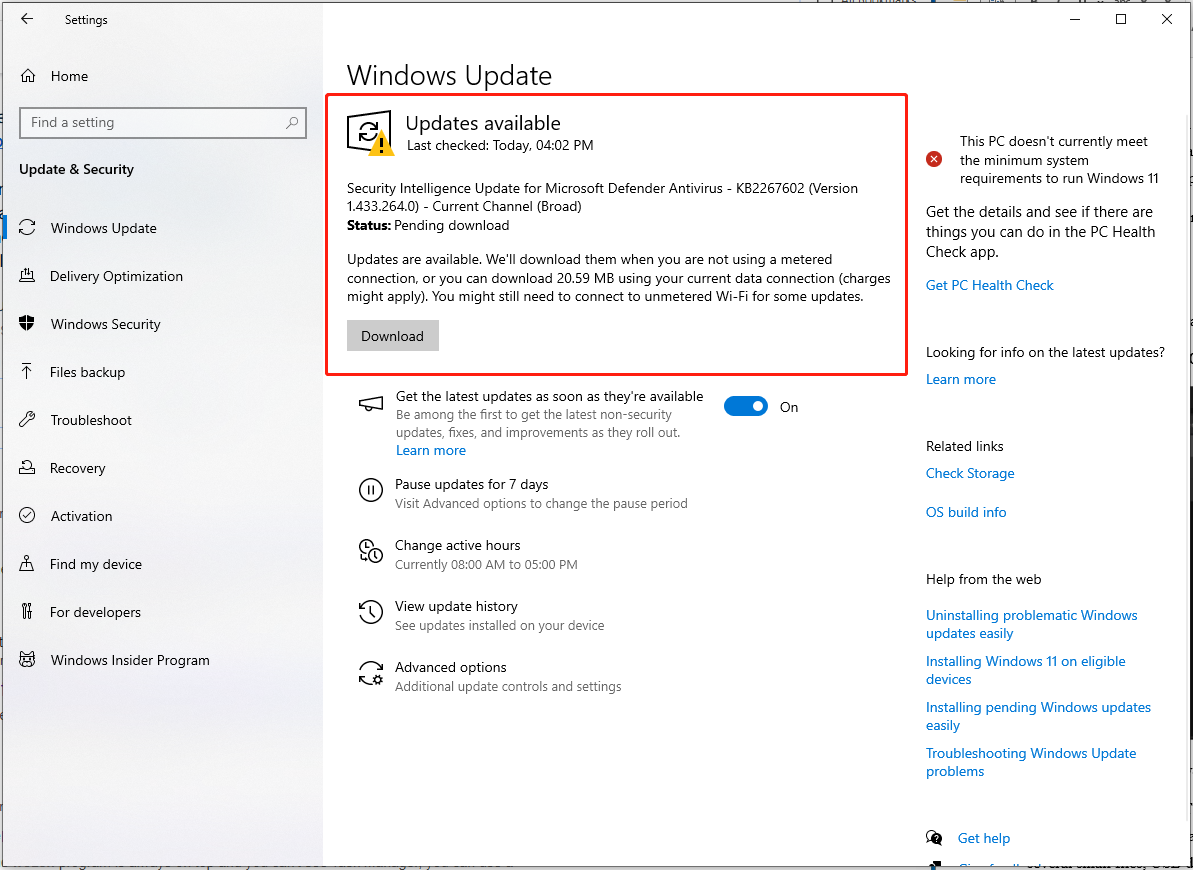
Step 4. Once done, launch Task Manager again.
Solution 4: Scan for Malware
If there is any malware or virus present in your Windows device, Task Manager freezing will also crop up. To get rid of the threats on your computer, you can perform a comprehensive scan with Windows Defender.
Here’s how to do it:
Step 1. Type Windows Defender in the search bar and hit Enter.
Step 2. Select Virus & threat protection > Scan options from Current threats > tick Full scan > hit Scan now to start the process.
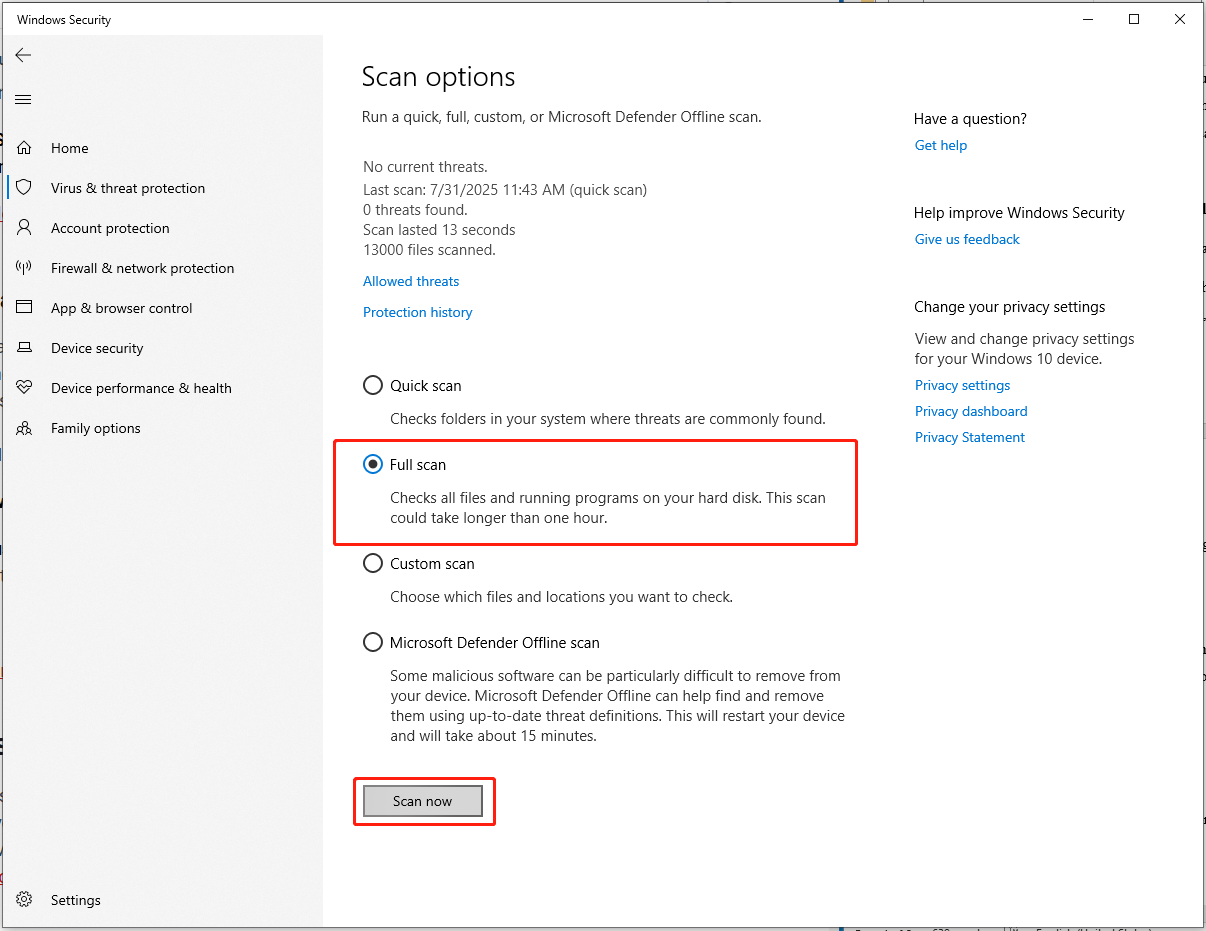
Step 3. After this operation is completed, check if Task Manager responds.
Solution 5: Create Another User Account
Chances are the Task Manager issue is caused by some errors in your profile or insufficient administrative rights. If you are the owner of this computer, switching to a new user account might do the trick.
Follow the steps to create a new user account:
Step 1. Press Win + I to bring up Settings and then click on Accounts.
Step 2. In the Family & other users section, hit Add someone else to this PC.
Step 3. Select I don’t have this person’s sign-in information > Add a user without Microsoft.
Step 4. Enter your new user name, password, and confirm it to create an account for this PC.
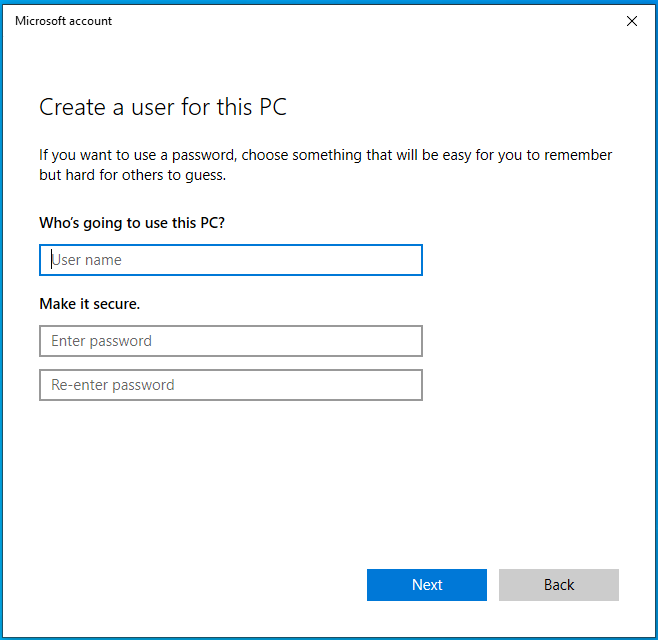
Step 5. Then, go to Settings > Accounts > Your info > Sign in with a Microsoft account instead > log in to your new account.
Solution 6: Run SFC/DISM
Sometimes, your system might get corrupted and that can result in various problems, like Task Manager not running. In this case, you can take advantage of SFC and DISM to detect and repair corrupted or faulty system files on your computer.
Here’s how to do it:
Step 1. Launch Command Prompt as an administrator.
Step 2. In the command window, type sfc /scannow and hit Enter.

Step 3. After the process is done, reboot your computer.
If Task Manager freezing is still there, launch an elevated Command Prompt again and run the command below:
DISM.exe /Online /Cleanup-image /Restorehealth
Step 4. Upon completion, restart your system again to check if Task Manager works fine.
Solution 7: Perform System Restore
Perhaps you have created any system restore points before. If so, you can use one of them to undo system changes by reverting your computer to a previous status and fix the issue of Windows Task Manager not opening or working.
Suggestion: Back up Precious Data Beforehand
Since the System Restore operation may cause data loss or missing, backing up your important files in advance is an absolute necessity. To do that, MiniTool ShadowMaker, a piece of free PC backup software, is a good helper.
On the one hand, its interface is pretty simple and clear, which is super user-friendly for computer beginners. On the other hand, this program offers powerful features such as file backup, partition backup, system backup, and disk backup to ensure the safety of your system and data.
When a system crashes, a virus infection or other disaster occurs, you can utilize the backup image to restore the operating system to a healthy state or retrieve lost or deleted data. Here, take creating a file backup on an external hard drive or a USB flash drive as an example:
Step 1. Click on the button below to get this freeware and then follow the on-screen wizard to finalize the installation.
MiniTool ShadowMaker TrialClick to Download100%Clean & Safe
Step 2. Launch this software to enter its main interface and head to the Backup page.
Step 3. In this page, hit SOURCE > Folders and Files to pick the items you need to protect.
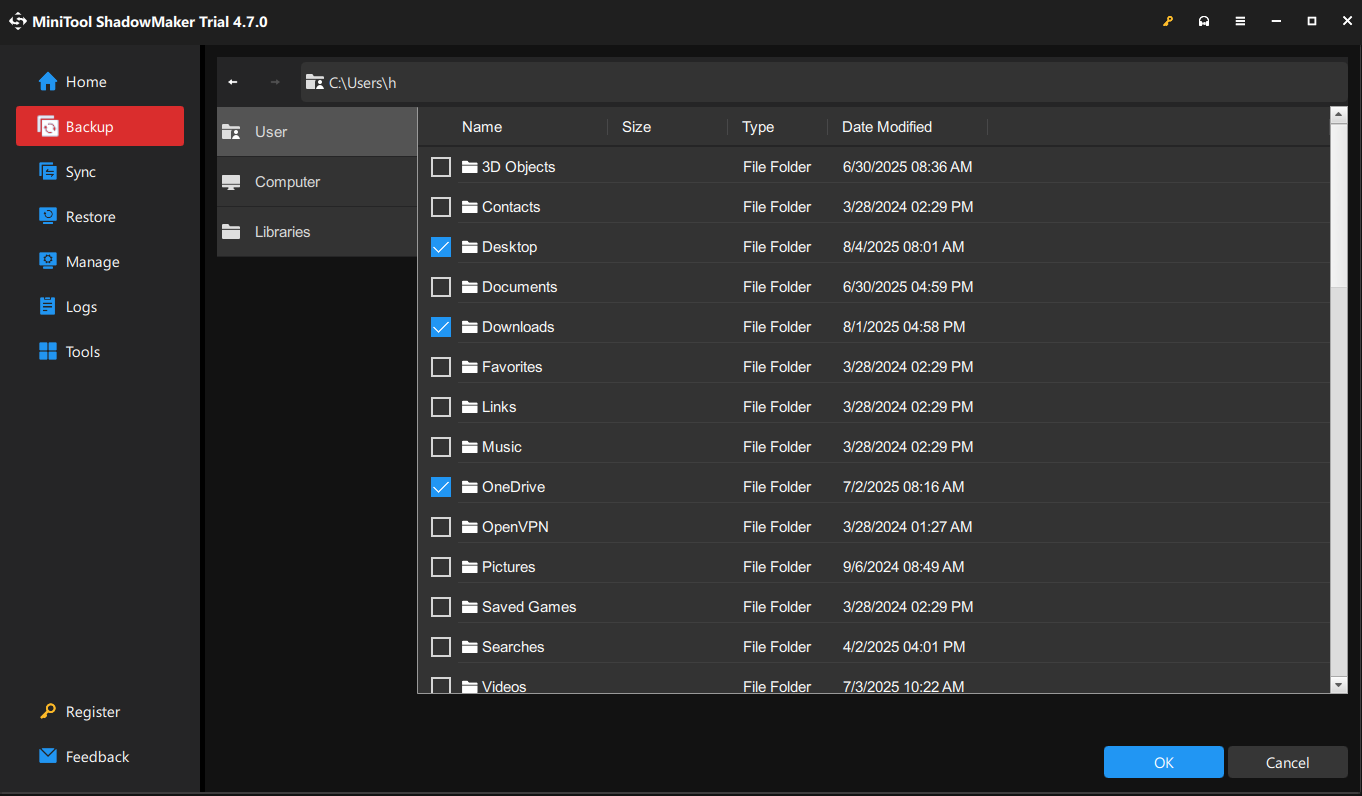
Step 4. Next, go to DESTINATION to pick a storage path. For a large number of files or some big files, external hard drives might be a better choice. If you only need to back up several small files, USB drives are ideal for you.
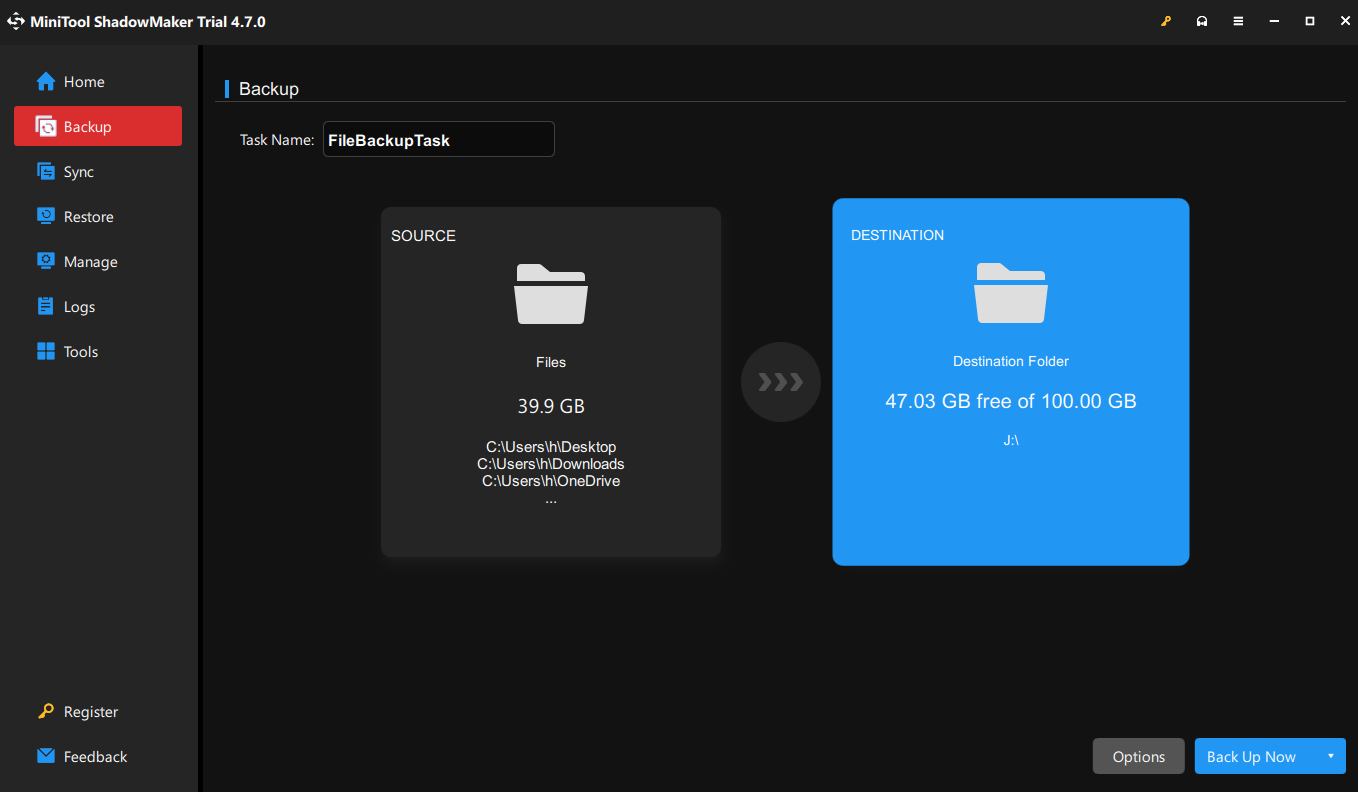
Step 5. After making your choice, click on Back Up Now to start the process at once.
How to Restore the PC to Its Earlier State?
With the backup in hand, now you can proceed with restoring the Windows system without any worry.
Step 1. Input system restore in Windows Search and choose Create a restore point.
Step 2. In System Properties, tap System Restore from the System Protection tab.
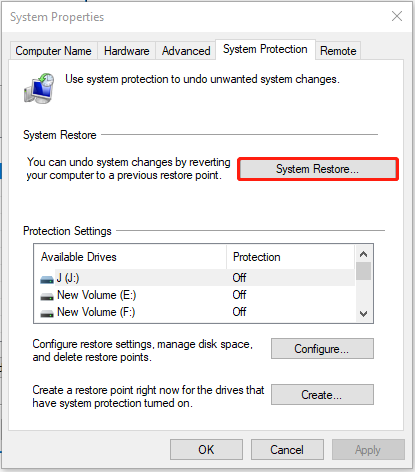
Step 3. The newest restore point you have created will be recommended then. Just click Next.
Step 4. Check the information of the restore point and then hit Finish.
Solution 8: Enable Task Manager via Registry
When Task Manager is not working, modifying some registry settings in Registry Editor might be of help to solve the problem.
To do that:
Step 1. Press Win + R to evoke the Run dialog, type regedit.exe and hit Enter to launch Registry Editor.
Step 2. Then, navigate to the following path:
Computer\HKEY_CURRENT_USER\SOFTWARE\Microsoft\Windows\CurrentVersion\Policies\System
Step 3. In the right pane, right-click on DisableTaskMgr > select Modify > set Value data to 0 > save the changes.
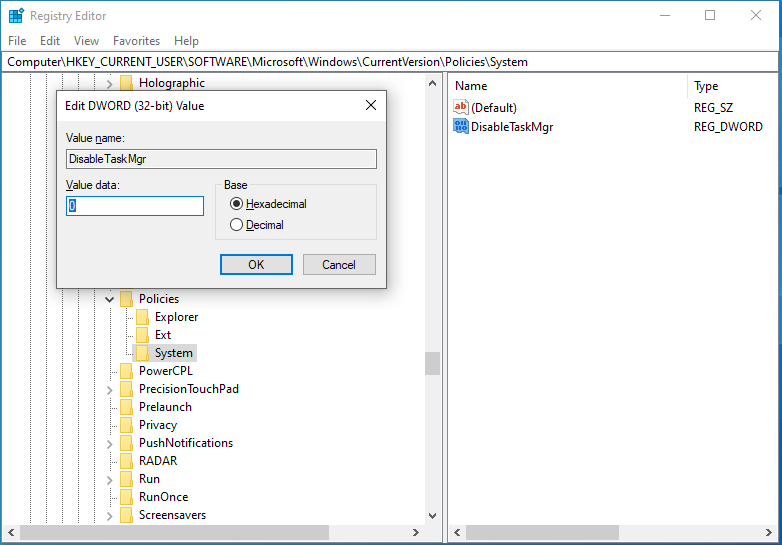
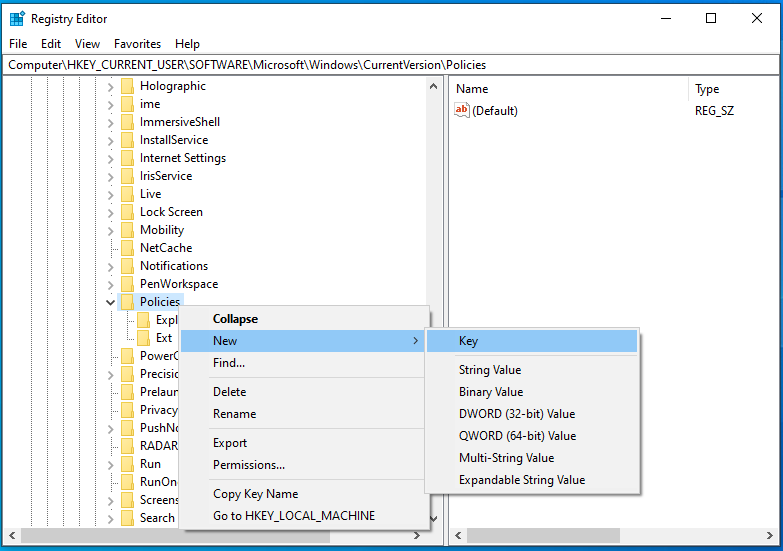
Finally, exit Register Editor, restart your computer and try opening Task Manager again.
Solution 9: Open Task Manager with Local Group Policy
Local Group Policy Editor is an inbuilt utility in the Windows system that helps you to control the working environment of your computer. If your Task Manager is still not responding, follow these steps to make changes in the group policy:
Step 1. Type gpedit.msc in the Run box and click OK to open Local Group Policy Editor.
Step 2. Navigate to User Configuration > Administrative Templates > System > Ctrl + Alt + Del Options.
Step 3. In the right pane, double-click on Remove Task Manager > select Disabled > hit OK to confirm the changes.

Step 4. After that, reboot your system and try running Task Manager again.
Solution 10: Perform Repair Upgrade
If the issue persists, perform a Repair Upgrade. This operation will reinstall Windows using the latest version, without affecting your files and apps. In addition, it will repair and replace any corrupted system files.
Here are the steps for executing Repair Upgrade:
Step 1. Download the Media Creation Tool from Microsoft by hitting Download Now under Create Windows 10 installation media.
Step 2. Run MediaCreationTool.exe > choose Upgrade this PC now > select personal files and apps.
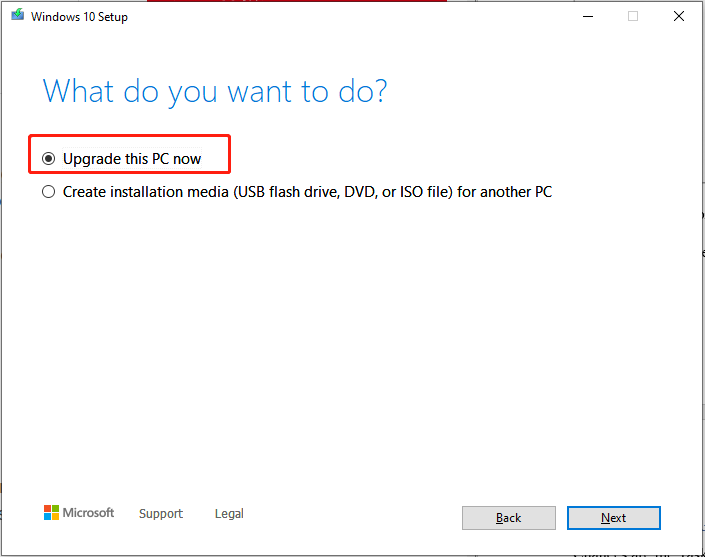
Step 3. Then wait for the installation to be completed.
Conclusion
This article elaborates on a series of effective solutions for the problem where Windows Task Manager fails to respond. Simply try them one by one, and we sincerely hope that you can benefit from the troubleshooting post.
If you face questions regarding MiniTool ShadowMaker, please contact [email protected]. We’ll reply to you as soon as possible.
Task Manager Not Responding FAQ
1. Type regedit in the Run dialog (Win + R) and hit OK to open Registry Editor.
2. Head to HKEY_CURRENT_USER\Software\Microsoft\Windows\CurrentVersion\TaskManager
3. Right-click on TaskManager and select Delete.
4. Confirm the deletion and reboot your PC.
1. Open Task Manager > go to the Processes tab > locate the unresponsive process > right-click on it > select End task.
2. Launch Command Prompt > run tasklist > look for the frozen app’s name > type taskkill /im (app_name.exe) > press Enter.
3. Press Alt + F4 to force end the task.
4. Give a forced restart for your PC.



User Comments :